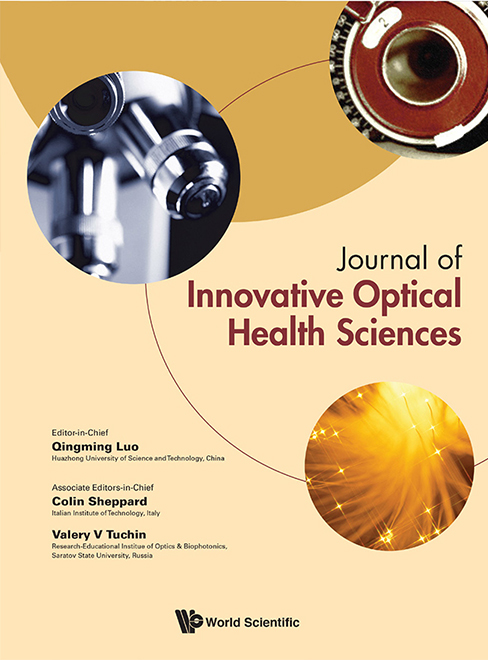 View fulltext
View fulltext
Black phosphorus (BP) or phosphorene, a new superstar among two-dimensional (2D) materials, has sparked huge scientific interest since its discovery in 2014. BP offers unique characteristics including high drug loading efficiency, excellent photodynamic and photothermal properties and good biocompatibility. These characteristics expand versatility of BP in nanomedicine. Although the outlook of BP seems promising, its practical biomedical applications are still at the very initial stage especially in comparison to other thoroughly investigated inorganic nanomaterials. This paper reviews BP structure and properties as well as its preparation approaches with the emphasis on techniques to improve BP stability and biocompatibility for their further usage in physiological environment. Meanwhile, recent progress made in various biomedical research fields from bioimaging to biosensing is discussed. Last, but not least, current challenges and prospects for BP in biomedicine are briefly examined, which will be useful to guide future developments of BP.
At present, two-dimensional (2D) materials have shown great application potential in numerous fields based on their physical chemical and electronic properties. Raman spectroscopy and derivative techniques are effective tools for characterizing 2D materials. Raman spectroscopy conveys lots of knowledge on 2D materials, including layer number, doping type, strain and interlayer coupling. This review summarized advanced applications of Raman spectroscopy in 2D materials. The challenges and possible applied directions of Raman spectroscopy to 2D materials are discussed in detail.
Bacterial infections are a major cause of chronic infections. Thus, antibacterial material is an urgent need in clinics. Antibacterial nanofibers, with expansive surface area, enable efficient incorporation of antibacterial agents. Meanwhile, structure similar to the extracellular matrix can accelerate cell growth. Electrospinning, the most widely used technique to fabricate nanofiber, is often used in many biomedical applications including drug delivery, regenerative medicine, wound healing and so on. Thus, this review provides an overview of all recently published studies on the development of electrospun antibacterial nanofibers in wound dressings and tissue medicinal fields. This reviewer begins with a brief introduction of electrospinning process and then discusses electrospun fibers by incorporating various types of antimicrobial agents used as in wound dressings and tissue. Finally, we finish with conclusions and further perspectives on electrospun antibacterial nanofibers as 2D biomedicine materials.
Metal clusters have attracted wide interests due to their unique electronic and optical properties, but the low luminescence quantum yield (QY) prevents them from potential biomedical applications. In this work, silver-doped Au nanoclusters (NCs) are shown to be able to improve the QY of metal clusters.We succeeded in synthesizing ultrabright glutathione (GSH) protected AuAg clusters with 10.8% QY by a one-pot route. Their florescence is about 7.5 times brighter than pure Au NCs, with super photostability and good biocompatibility in physiological environment. Based on density functional theory (DFT) calculations, we investigated the electronic structures and optical properties of the AuAg NCs. The results show that the increase of the density of states of the lowest unoccupied molecular orbital (LUMO) leads to the fluorescence enhancement. In addition, two-photon excitation fluorescence imaging has been performed to show their great potential for biomedicine.
Short wave near-infrared (SWIR, 900–1700 nm) fluorescence imaging has attracted extensive research interest from scientists due to its high imaging quality. However, the variety of SWIR fluorescence imaging agents are quite limited and the corresponding quantum efficiency is relatively low. In this work, a novel conjugated polymer PDTSDTBT was reported, consisting of a donor unit with a tetrahedral Si (sp3) named DTS and an acceptor unit named DTBT with branched side chains. The design approach of endowing the donor–acceptor structure with the branched side chains successfully increase the fluorescence quantum efficiency. The polymer was prepared into nanoparticles by nanoprecipitation. The PDTSDTBT nanoparticles showed an absorption peak of 626 nm and fluorescence emission peak of 924 nm. The quantum efficiency of the nanoparticles is 0.53%, which is higher than that of nanotube fluorophores (0.4%). The nanoparticles also demonstrate a photothermal effect, the temperature of nanoparticles solution could reach 45 ℃ under excitation by 660 nm laser. Therefore, the PDTSDTBT nanoparticles is an excellent fluorescent imaging agent with potential photothermal applications.
The absorption, scattering, and autofluorescence of biological tissues in short-wave infrared region (SWIR, 900–1700 nm) are relatively low, so SWIR fluorescence usually has deeper penetration into living tissues, and can show a higher signal-to-noise ratio when used for imaging in vivo. However, there are few types of organic SWIR fluorescent materials currently. In this work, p-azaquinodimethane (p-AQM) with a quinoid structure is used as the acceptor unit, and carbazole or fluorene with sp3 hybridization are used as the donor units, two conjugated polymers were synthesized. The quinone structure is conducive to the redshift of absorption and fluorescence spectra, and the sp3 hybridization structure is conducive to weakening the aggregation quenching of polymer fluorescence. PF and PCz exhibited absorption peaks of 492 nm and 508 nm, respectively. The emission peaks of the two polymers are 920 nm and 950 nm, respectively, both in the short-wave near infrared region. The quantum yield (QY) of PF and PCz is 0.4% and 0.3%, respectively.
Two-dimensional (2D) nanomaterials have captured an increasing attention in biophotonics owing to their excellent optical features. Herein, 2D hafnium ditelluride (HfTe2), a new member of transition metal tellurides, is exploited to support gold nanoparticles fabricatingHfTe2-Au nanocomposites.The nanohybrids can serve as novel 2D surface-enhanced Raman scattering (SERS) substrate for the labelfree detection of analyte with high sensitivity and reproducibility. Chemical mechanism originated from HfTe2 nanosheets and the electromagnetic enhancement induced by the hot spots on the nanohybrids may largely contribute to the superior SERS effect of HfTe2-Au nanocomposites. Finally, HfTe2-Au nanocomposites are utilized for the label-free SERS analysis of foodborne pathogenic bacteria, which realize the rapid and ultrasensitive Raman test of Escherichia coli, Listeria monocytogenes, Staphylococcus aureus and Salmonella with the limit of detection of 10 CFU/mL and the maximumRaman enhancement factor up to 1.7 × 108.Combined with principal component analysis, HfTe2-Au-based SERS analysis also completes the bacterial classification without extra treatment.








